Most horse owners have experienced a barn injury in some way. People may neglect barn safety but we recommend considering a safe place. Such a place can be provided by following the guidelines mentioned in this article. A thoroughly planned horse barn protects the horseman and their equines.
In fact, 30% of horse-related injuries are happening in or around the barn. They are related to horse kicks, steps on, and pushes. Such issues are preventable in case farm owners know how to handle them. Thus, we’d like to outline essential safety rules to follow.
Horse owners spend significant time at the barn cleaning, grooming, feeding, and communicating with horses. It’s a great responsibility to care for animals. You have to be aware of safe ways to deal with your daily chores. Let’s trot on over horse barn safety guidelines to consider.
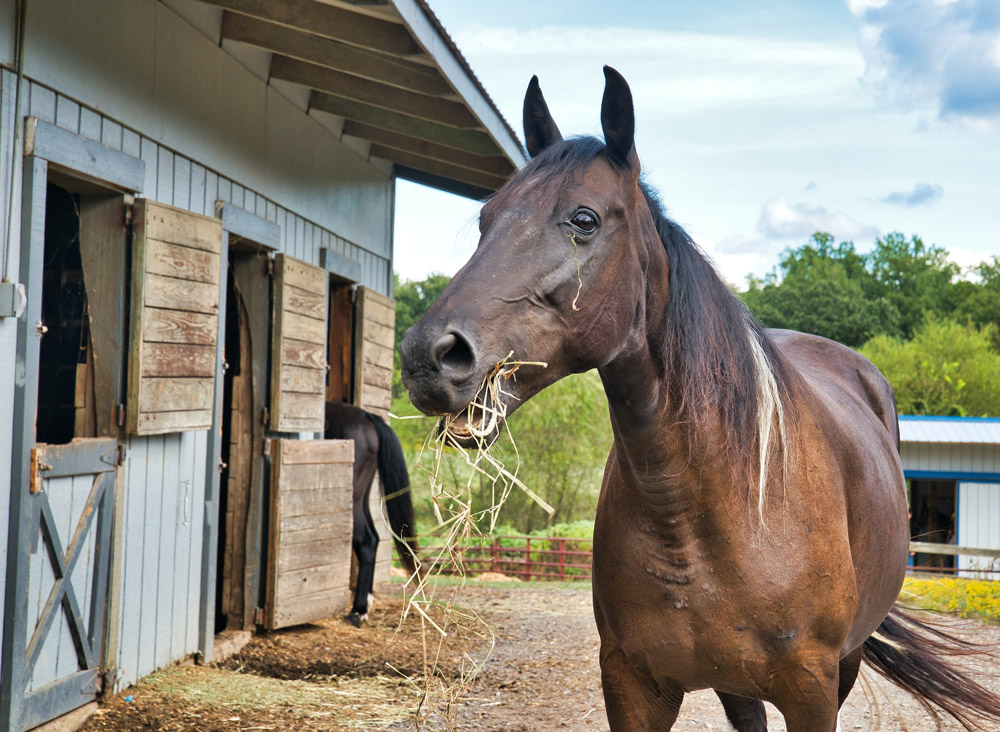
General Horse Barn Rules
Barn Aisles and Entrances
These are high-traffic areas where you should be careful. Barn aisles and entrances have to be wide enough to pass through. Unclutter such places regularly to avoid stumbling over obstacles. The rider and the horse should move flawlessly around the barn. The aisle must be at least 12 feet wide to handle two horses safely. There should be enough space so the animals could turn around.
Consider ceilings high enough in case of a rearing horse. The barn fixtures have to be placed at the level so the horses can’t reach them and break them down. As for the flooring, a non-slip surface is the best option. This will prevent barn owners from slipping and falling.
Provide solid lighting inside the horse barn. This is substantial to maintain cleaning, grooming, feeding, and farrier shoeing, and others.
Keep all the tack gear out of your way. Use racks to fold up horse saddles and other apparel when they are not in use. In case you have tack boxes, make sure there is enough room to store them on the floor so pets can pass by.

Barn Stalls
While your horse is in the stall, you should take safety measures as well. The size of the box stall must fit the horse. A 12 x 12 feet box stall is enough for an average horse. There should be enough space around horses and the owner to move freely and comfy.
Sliding doors are excellent for barn stalls as they don’t block the aisle. On the other side, swinging stall doors are also a good option. Install an outward stall as they provide more space for movement. In the case of inward doors, the owner has to be careful when handling the horse inside.
Make the windows horse-friendly. Protect the windows with bars or mesh. While arranging the feeders, a proper spot with easy access is required. It’s better to place the feeders outside the stalls but reachable for horses. The stall-related things should be stored far away from horses avoiding sharp edges. Don’t install any items without permission. When working with a horse in the stall, never latch the door to ensure a safe and quick exit.
Clean the stalls on a regular basis. Fresh air and bedding is a must. Use special cleaning products that are horse-friendly to disinfect the room. Check the stalls for losing nails and broken welds regularly. The walls have to be solid enough to deal with a kicking horse. Get the horse-proof door latches to prevent an equine from escaping.
Print a poster will all urgent contacts – vet, farrier, barn staff, owner – and hand it outside the stalls. In case of emergency, this may help the rider to take urgent actions.
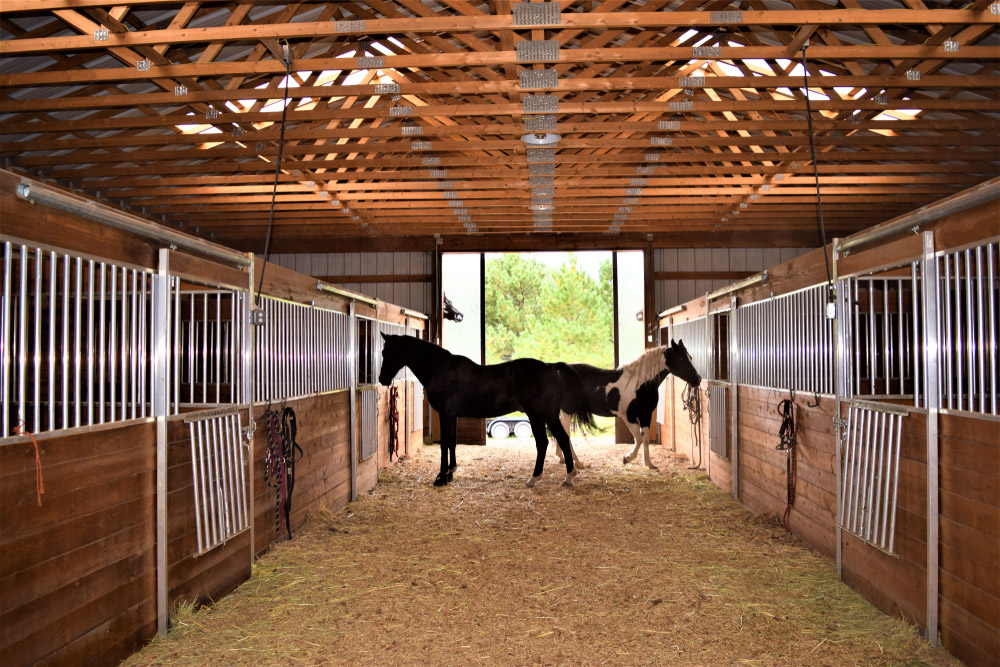
Barn Organization Around Horses
A neat and tidy property promotes a safe environment for owners and horses. Everything in the barn must be stored on its spot and kept out of the way. Get rid of all the unnecessary things that could hurt the equine. Sweep the dirt and debris frequently so the horse can’t swallow tiny pieces. Besides, rotten food could lead to health worsening and severe diseases. Keep all the plants toxic to horses away from the facility.
Clean the facility from manure, urine, and bird droppings regularly. Keep the space clean for parasite and fly control. Fresh air also affects the horse barn cleanliness. And of course, no smoking in the stable!
Keep water clean and fresh. Standing water may cause equine diseases as well as attract insects. Always clean all the buckets, pipes, and tubs. Disinfect these spots to avoid molding.

Storage
Proper storage is a part of barn cleanliness. All the feed, tools, and tack must be kept out of the traffic. It’s not recommended to lean the things against the wall as they may fall down. This could spook the horse and lead to unpredictable behavior.
Store your horse riding saddles and bridles away from the barn aisles. Minimize the risk of injuries by spreading tools all over the hangs and racks. Find a corner or a wall that horses can’t reach.
The same goes for horse feed and supplements. Ensure the treats are placed away from animals. This could prevent horses from dragging riders to the spot with food. Provide a dry place to store the feed. It must be a place secured from rodents and molding.

Hay Storage Barn Rules
Hay lofts in the barns are excellent hay storage. It should be secured and has easy access. In case you have to reach the loft by ladder, make sure it’s set still. Check the ladder’s condition before climbing.
Clean the spot before dropping the hay on the ground. Hay bales are indeed heavy, throw them carefully and try not to spook the horse. If there’s barn staff nearby, it’s better to alert everyone that you’re about to drop the feed. Besides, check your fingers and clothing if they’re not stuck before throwing the bales.
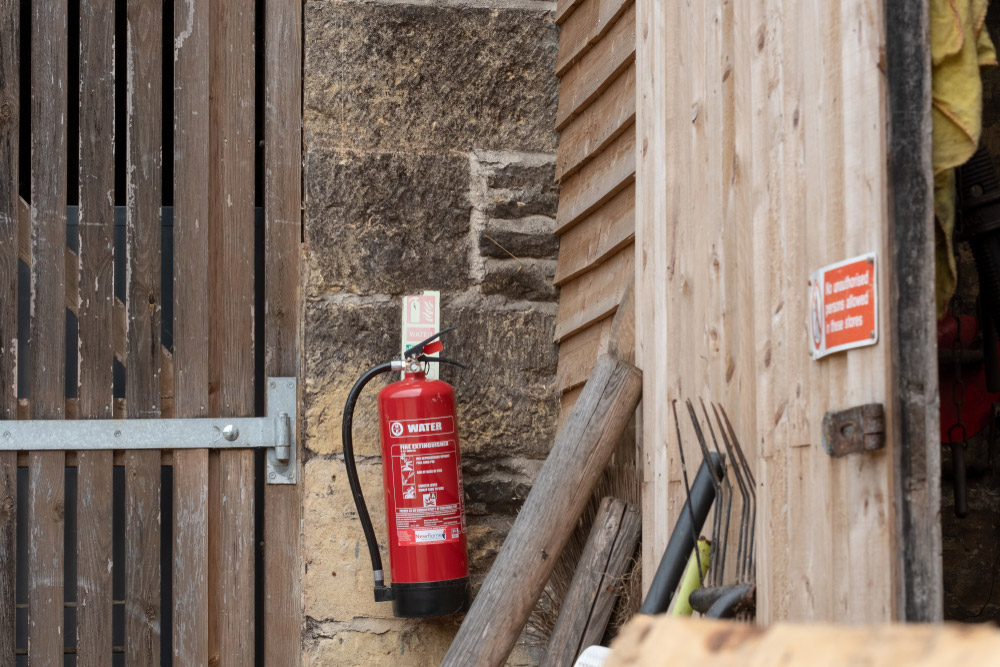
Fire Safety Tips
There’s a big range of flammable materials in the barns. That’s why barn fires is a common thing but it can be prevented. Here’s a list of barn rules that promotes safe barn management for the owner and the horse.
- The stalls must be highly ventilated. This affects overall health and prevents fire.
- No smoking policy is a must. Hang the posters all over the barn.
- Keep all the flammable materials away from the facility.
- Clean the stalls regularly from webs.
- Hay and bedding should be stored separately from the stable.
- All the wires must be protected and regularly checked.
- Don’t use the cords with cuts. All the cords must be insulated.
- Don’t overload electrical outlets.
- Don’t use equipment with faulty wiring.
- Don’t leave running electrical devices without supervision.
- Don’t leave devices that run on gas without supervision.
- Spread the signs with emergency contacts all over the stable.
- Hang emergency phone numbers where everyone can see them.
- Prepare a first-aid kit for people and horses and post signs with their location.
- Create an emergency evacuation plan in case of fire. All the clients, staff and riders must know it.
- Check if every horse has a halter and a lead rope hanging nearby. So riders could use them to get the animals out of the property.
- The presence of fire extinguishers near each exit is a must. ABC extinguishers are recommended to use in the stable. Make 30-foot intervals between them.

Horse Tying Safety Rules
A properly tied horse is a guarantee for safe mounting. Check the following rule checklist to get the hang of it.
- Use a lead rope instead of a lead shank.
- Learn how to make a quick-release knot to use when roping.
- Natural twine is a brilliant means to break away.
- A pocket knife may help you release the horse in case of an emergency.
- Tie a horse at the level of its shoulders.
- Find a solid object for a hitching post before tying a rope. Don’t use stall or car doors, or gates.
- Take the lead rope away from a horse in cross ties so it won’t step on it.
- Ask professional trainers to teach you how to tie and make the horse stand still
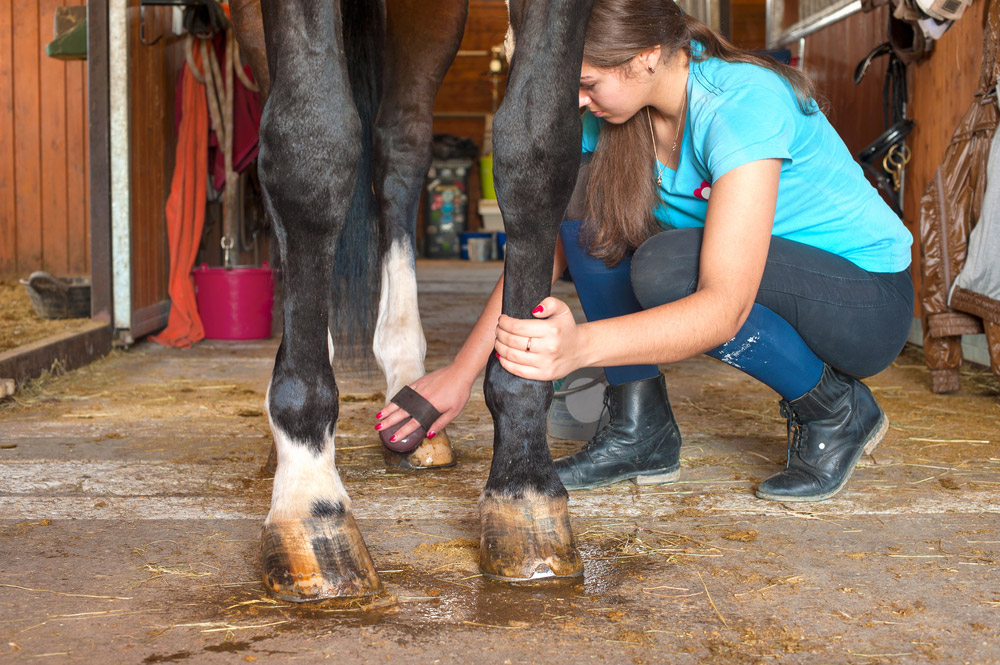
Horse Grooming Rules
Interaction with a horse is magnificent. Most people find it even soothing. Any pet, like dogs, needs regular grooming. And horses are not an exception. You should know how to care for a horse aptly to make this operation safe for both of you.
- Boarders are recommended to groom their horses regularly. This is a good chance to check the equine for wounds, scars, and bruises.
- Tie your companion before grooming in a spacious area. The surface must be non-slip and there has to be enough lighting. Keep the horse away from high-traffic spots. Unclutter this place and get rid of the equipment that you don’t need for grooming.
- Get all the necessary grooming tools and riding equipment like a saddle at hand. So you can access them once you need them.
- Boarders should know the proper position for grooming. Don’t walk under the horse’s neck. Don’t sit on the ground or kneel next to your horse. As such positions limit your motions in case a horse starts moving or bucking quickly. Crouch or stand when working with a horse.
- Stay alert all the time. In case of any rapid or running moves, you should react accordingly.
- Talk to your horse in a calm way when grooming. You can pet it and give treats as well. This will help the equine understand your location. But don’t treat the animal without permission.
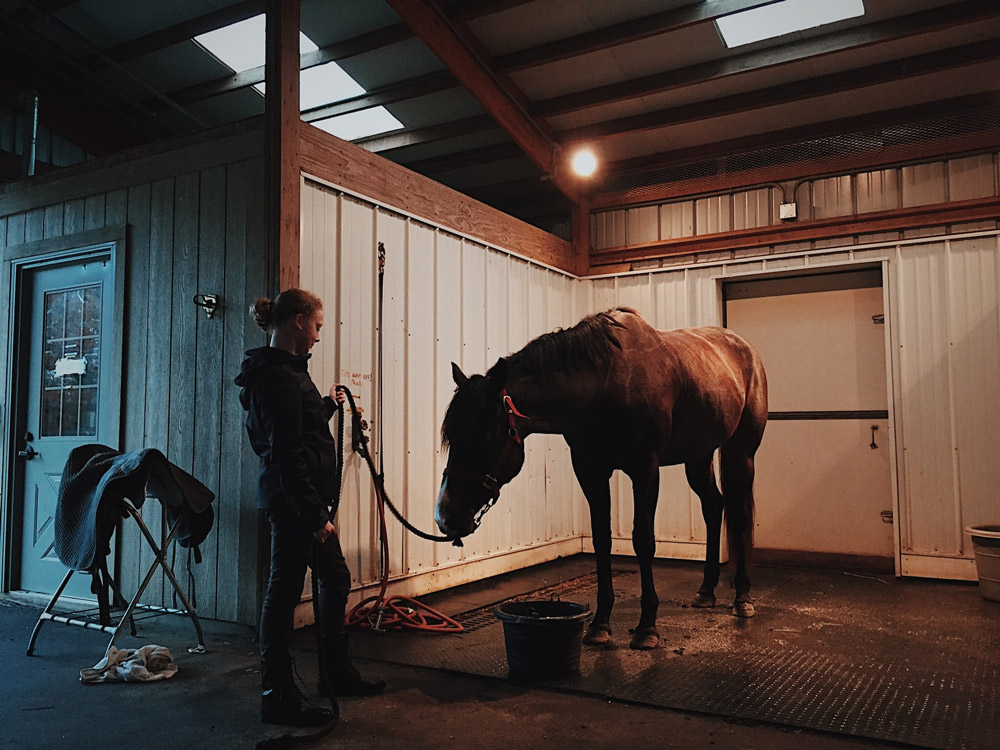
Horse Bathing Rules
- Boarders have to prepare all the bare essentials for bath time. These are sponge, shampoo, cloth, scraper, and more.
- Introduce your horse to a bathing place like a wash rack. Set the water temperature and start showering the horse’s legs first. Check the equine’s reaction and adjust the temperature if needed.
- Don’t spray water in front of the animal’s face. The face and ears should be cleaned with a sponge or soft cloth.
- Boarders should use solid shoes that are non-slip and waterproof.
- You may ask an instructor to give you a helping hand in the case of young horses or ponies.
- Store all the bathing tools in a safe place unreachable for animals.

How to Blanket Your Horse Safely
A horse owner or a boarder may find blanketing a horse challenging at first. These instructions could make the operation easier and safer.
- If it’s the first time you put a horse blanket on, you may need assistance. The main rule is to hold or tie the equine when blanketing.
- Before tacking the sheet, make sure the size is appropriate.
- Groom the horse before blanketing.
- Fold the blanket to carry it conveniently.
- Introduce the blanket to the horse first so it could smell the tack and get used to it.
- Approach the side of the horse in the same way as you tack a saddle. Put the folded blanket on the horse’s back.
- If the horse feels calm, go on unfolding the blanket on the back.
- Most blankets come with front and belly closures. Secure the front straps while standing near the horse’s shoulder.
- Move to the side and grab the belly strap underneath. Secure the closures not too loose and not too tight. If you can place your fingers between the strap and the belly, you’re all set.
- Go to the horse’s hip to adjust the rear straps. But don’t stand behind the horse.
- Walk the equine with a halter so the animal can get used to the new tack.

So Is Your Barn Safe Enough?
A horse owner is responsible for barn safety. There are crucial barn rules to provide a safe environment. Everyone on the property including clients, riders, trainers, and even children has to get familiar with safety guidelines. Following the guidelines mentioned in this article could promote the longevity of the barn.
